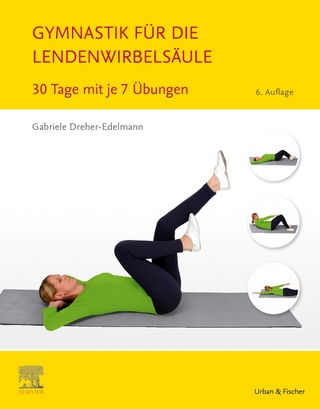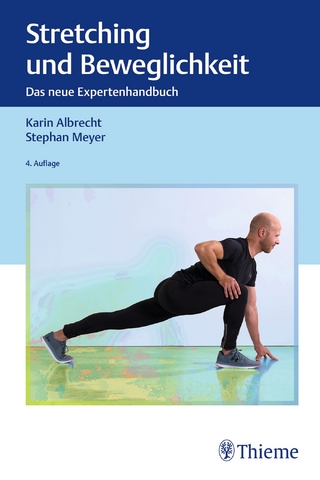Muscle Slings in Sport
The author paints a vivid picture of the phases of the various movements in sport, and points out the muscles which are involved in muscle slings – just as if he were an enthusiastic reporter watching a game or an athletic performance.
He describes in detail the muscle slings involved in the following sport disciplines (among others):
throwing (javelin, medicine-ball, shot-putting)
wrestling and boxing
gymnastics (parallel bars, rings)
rhythmic gymnastics
rowing
ballet dancing
jumping (high, long, hurdling)
running (sprinting, race-walking, short-distance)
climbing
football
The text is superbly complemented by the unique three-part illustrations created in the 1950s by the Leipzig artist, Kurt Opitz. Their quality and accuracy have never been bettered – and probably never will be – because they are the result of an intensive cooperation over a lengthy period, between the artist and the anatomist.
The reader will gain an insight into the functional-anatomical approach to the motor system in everyday life and will acquire the knowledge needed to develop training concepts for both sport and rehabilitation.
Prof. Dr. med. habil. Dr. h.c. Kurt Tittel:
- 1939–1945 Medizinstudium Univ. Leipzig,
- 1945 Staatsexamen und Promotion (Dr. med.),
- 1961 Facharzt-Anerkennung Anatomie,
- 1964 Facharzt-Anerkennung Sportmedizin,
- 1964 Habilitation Univ. Halle (Saale),
- 1965 Dozentur für Funktionelle Anatomie Univ. Halle (Saale),
- 1969 Professur und Lehrstuhl für Funktionelle Anatomie und Direktor des Instituts für Sportmedizin der Deutschen Hochschule für Körperkultur Leipzig,
- 1972–1983 Dekan der Fakultät für Naturwissenschaften und Sportmedizin,
- 1971–1975 Mitglied des Rates der Med. Fakultät Univ. Leipzig,
- 1973–1990 Präsident der Gesellschaft für Sportmedizin der DDR,
- 1980–1990 Mitglied des Exekutiv-Komitees und Vorsitzender der Wissenschaftskommission der FIMS,
- 1984–1887 Lehrstuhl für Sportmedizin der Akademie für Ärztliche Fortbildung in Berlin-Lichtenberg,
- 1985 Emeritierung,
- 1987–1992 Mitglied der Publishing Advisory Commission des IOC,
- 1996 Ehren-Doktorat (Dr h.c.) Univ. Leipzig.
Sportärztliche Betreuung: Mannschaftsarzt bei 3 Olympischen Sommerspielen, 4 Handball–Weltmeisterschaften (Groß- u. Kleinfeld) und bei 220 internationalen Spielen.
Internationale Ehrungen: 1974 Philip-Noel-Baker Forschungspreis der UNESCO, 1984 Forschungspreis der Sport-Akademie der USA, 1984 Ehrenmitglied der Purkynche-Gesellschaft der CSSR u. Ehrenmitglied der Ungarischen Gesellschaft für Sportmedizin, 1989 Ehrenpreis des Internationalen Olympischen Komitees, 2002 Goldmedaille der Internationalen Föderation für Sportmedizin (FIMS).
1 Analysis of sequencesof movements in sport from a functional-anatomical point of view1
1.1 Adaptability of the motor system as a process and outcome 2
1.2 Form, structure and function 3
1.3 Open and closed joint systems4
1.4 The cooperation between muscle groups which form muscle slings 7
1.5 Coordinated capabilities – functions and the basis for “motor learning” 9
1.6 Functional principles for sequences of movements 10
1.7 What should be considered with regard to muscular imbalance 12
1.8 Learning to observe and describe 15
2 Applied anatomy in sport17
2.1 Extensor slings of the lower extremity 19
Anatomy revisited: The central role of the spinal column in dynamic and static sequences of movements 22
2.2 Extensor slings in whole-body movements 30
Overextension of the body backwards 30
Long- and middle-distance runners 32
Sprinter (at the start of the 100 meters) 36
Javelin thrower 40
Medicine-ball thrower 42
Wrestler (standing combat) 44
Wrestler (ground combat) 46
Boxer 48
Gymnast 50
Rower 52
Anatomy revisited: Lesion-prone weak point: lumbo-sacral transition 56
Weightlifter 59
Inhibitory and braking function of the extensor sling 62
2.3 Flexor slings of the lower extremity 64
Basic movements64
Sudden and brisk lifting of the leg 66
Ballet dancer 68
Hurdler 70
2.4 Flexor and extensor slings in whole-body movements 70
Long jumper 72
High jumper 76
Rope climber 78
Wall climber 78
Anatomy revisited: Muscles of the trunk and the shoulder girdle in artistic gymnastics 80
2.5 Muscle slings in static sequences of movements 84
Gymnast on parallel bars 84
Gymnast on the rings 86
High-bar gymnast 92
Anatomy revisited: Role and integration of the abdominal muscles in lateral inclination and rotation 94
2.6 Muscle slings in lateral inclination and rotation of the body 98
Lateral inclincation of the trunk 100
Rhythmic gymnastics 104
Gymnastics with round weights 107
Anatomy revisited: The central role of the knee joint in many sports disciplines 108
Football player (crossing the ball) 112
Football player (volleying the ball) 114
Handball player (jump shot) 116
Discus thrower 118
Javelin thrower 120
Hammer thrower 122
2.7 Combination of muscle slings 124
Shot-putter 124
Race-walker 126
Short-distance runner 128
Final Remarks 130
3 Appendix 131
Afterword 132
Source of figures and tables 133
References 133
Index 136
Preface Movement in every-day life and in sport shows that the functional and structural adaptation of the active and passive motor system to physical strain of variable duration and intensity is a precondition of high physical performance. It should be based on a well-balanced and well-trained interplay of the muscular agonists and antagonists responsible for dynamic and static movements. This interplay becomes all the more necessary for the planning and implementation of prophylaxis, training methodology and physiotherapy, when one considers the increasing physical specialization and the inappropriate strain which is sometimes put on muscles, both at work and particularly in sport. To achieve this aim, it is not primarily the size or power of a single muscle, however well developed, which is important, but rather the way it can function optimally in the context of movements of a part or of the whole of the body, when it is combined with other agonists and antagonists to form “muscle slings”, which operate as a functional unit. In this way stable muscle-joint relationships are established, which guarantee that the movement and support system of our body can withstand great stress. This is what the numerous and interesting sequences of movements, carried out by female and male athletes in various types of sport, are intended to demonstrate. At the same time the reader will learn about the important part played by a functional-anatomical approach to the motor system in everyday life and practice. The content is intended to meet the needs of sports training, physio- and sports therapy, and rehabilitation following injuries. The text is superbly complemented by the unique threepart illustrations created by the artist, Kurt Opitz. This book has been written especially for sports students, and for physio-, sport- and ergotherapeutic students, as well as for trainers and sports physicians in continuous professional development. The author was actively involved in anatomy and sports medicine for almost four decades, and had medical responsibility for professional athletes at a national and international level, and was thus in continuous contact with the practical aspects of sport. He hopes that, with this book, he can give the reader some new and interesting insights and stimulating ideas for his or her own work. I wish to give special thanks to KIENER Press in Munich and to the translators for their professional and committed support and reliable cooperation. Kurt Tittel Leipzig, June 2015
Preface Movement in every-day life and in sport shows that the functional and structural adaptation of the active and passive motor system to physical strain of variable duration and intensity is a precondition of high physical performance. It should be based on a well-balanced and well-trained interplay of the muscular agonists and antagonists responsible for dynamic and static movements. This interplay becomes all the more necessary for the planning and implementation of prophylaxis, training methodology and physiotherapy, when one considers the increasing physical specialization and the inappropriate strain which is sometimes put on muscles, both at work and particularly in sport. To achieve this aim, it is not primarily the size or power of a single muscle, however well developed, which is important, but rather the way it can function optimally in the context of movements of a part or of the whole of the body, when it is combined with other agonists and antagonists to form “muscle slings”, which operate as a functional unit. In this way stable muscle-joint relationships are established, which guarantee that the movement and support system of our body can withstand great stress. This is what the numerous and interesting sequences of movements, carried out by female and male athletes in various types of sport, are intended to demonstrate. At the same time the reader will learn about the important part played by a functional-anatomical approach to the motor system in everyday life and practice. The content is intended to meet the needs of sports training, physio- and sports therapy, and rehabilitation following injuries. The text is superbly complemented by the unique threepart illustrations created by the artist, Kurt Opitz. This book has been written especially for sports students, and for physio-, sport- and ergotherapeutic students, as well as for trainers and sports physicians in continuous professional development. The author was actively involved in anatomy and sports medicine for almost four decades, and had medical responsibility for professional athletes at a national and international level, and was thus in continuous contact with the practical aspects of sport. He hopes that, with this book, he can give the reader some new and interesting insights and stimulating ideas for his or her own work. I wish to give special thanks to KIENER Press in Munich and to the translators for their professional and committed support and reliable cooperation. Kurt Tittel Leipzig, June 2015
| Erscheint lt. Verlag | 13.7.2015 |
|---|---|
| Zusatzinfo | 116 farbige Illustrationen |
| Verlagsort | München |
| Sprache | englisch |
| Maße | 196 x 270 mm |
| Gewicht | 602 g |
| Einbandart | gebunden |
| Themenwelt | Sachbuch/Ratgeber ► Sport |
| Medizin / Pharmazie ► Medizinische Fachgebiete ► Sportmedizin | |
| Physiotherapie / Ergotherapie ► Rehabilitation ► Sport-Rehabilitation | |
| Medizin / Pharmazie ► Physiotherapie / Ergotherapie ► Sport und Trainingslehre | |
| Studium ► 1. Studienabschnitt (Vorklinik) ► Anatomie / Neuroanatomie | |
| Schlagworte | anatomy • Athletes • functional anatomy • muscle slings • Muskel • olympic disciplines • sport medicine • Sportmedizin • Summer Olympics • think critically • Understanding |
| ISBN-10 | 3-943324-41-9 / 3943324419 |
| ISBN-13 | 978-3-943324-41-9 / 9783943324419 |
| Zustand | Neuware |
| Haben Sie eine Frage zum Produkt? |
aus dem Bereich




